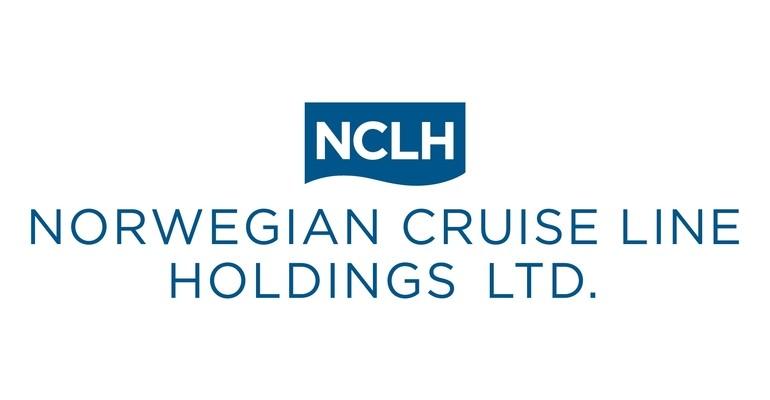As of April 17, approximately half of the passengers on canceled voyages have requested cash refunds versus future cruise credits.
Monthly cash burn $110m-$150m
In recapping actions taken to cut costs and shore up liquidity, the company also estimated current monthly cash burn at approximately $110m to $150m during the suspension of operations.
Before the COVID-19 outbreak, 2020 was off to a strong start for NCLH with its three brands entering the year in a record booked position and at higher prices on a comparable basis. For the first two months of the year, ships sailed full at prices that were higher than prior year despite healthy capacity growth of approximately 7%.
2021 bookings picture
As of April 17, advance bookings for the remainder of 2020 were meaningfully lower than the prior year with pricing down low-single digits. Booking trends indicate demand for cruise vacations in the medium and longer term with the booked position for 2021 essentially flat compared to prior year at pricing that is down mid-single digits.
Advance ticket sales
As of March 31, NCLH had $1.8bn in advance ticket sales. This includes approximately $850m for previously announced voyage cancellations through June 30, where customers have the option of either a future cruise credit or a cash refund and approximately $350m for voyages scheduled for the remainder of 2020. The company also continues to take bookings for 2020, 2021 and 2022, and receive new customer deposits and final payments on these bookings.
In providing this update today, NCLH also recapped how it has acted to shore up liquidity through cost mitigation and cash conservation measures while pursuing additional sources of liquidity.
'We believe the disruption to the travel industry, while swift and severe, will eventually subside. Our guests continue to demonstrate their desire for cruise vacations as we continue to experience demand for voyages further in the future across our three brands,' NCLH President and CEO Frank Del Rio said. 'When the time comes, we will be ready to safely resume operations and welcome our loyal guests on board.'
As earlier reported, sailings for Norwegian Cruise Line, Oceania Cruises and Regent Seven Seas Cruises are currently suspended through June 30. With the US-issued no sail order for all lines, this could potentially stretch to July 24 or for a shorter or longer period, depending on the public health emergency.
Most ships to cold layup
Meanwhile, all 28 ships in the company’s fleet are in safe haven in port or at anchor. The majority of ships are transitioning to cold layup.
Reduced cruise operating expenses include those associated with crew payroll, food, fuel, insurance and port charges. Marketing expense in the first half has been significantly reduced or deferred.
A temporary shortened work week and reduced work hours with commensurate 20% salary reduction for shoreside team members was introduced, along with actions like paused employer 401(k) match contribution, a hiring freeze and suspended employee travel.
Monthly ship/administrative costs
The company anticipates estimated ongoing ship operating expenses and administrative operating costs combined to range from approximately $70m to $110m per month during the suspension of operations.
Reduced capex
NCLH has identified approximately $515m of capital expenditure reductions, including $345m, or a nearly 70% reduction of non-newbuild capital expenditures, for the remainder of 2020.
In addition, the company anticipates approximately $170m in reduced and deferred capital expenditures for newbuild related payments through March 31, 2021, which are currently being finalized. Upon completion, the company’s next newbuild related payments would not be until April 2021.
Export-credit-backed debt holidays
Export credit agency (ECA) lenders are working to finalize an industrywide initiative to grant a 12-month debt holiday to provide interim debt service relief. NCLH has approximately $540m of ECA-backed amortization payments due over the next 12 months, of which approximately $385m related to Germany and have already been deferred through April 2021. The company is in the process of finalizing the deferral of the remaining approximately $155m of payments through March 31, 2021 with its other ECA lenders.
NCLH also has the contractual optionality to extend its $230m Pride of America term loan by one year to January 2022.
Additionally, the company is working with lenders and evaluating additional options available to defer or refinance certain other existing debt.
As earlier reported, NCLH secured a new $675m revolving credit facility on March 5 and fully drew down on this new facility as well as its existing $875m revolving credit facility beginning on March 12 for a total of $1.55bn. At March 31, the company's total debt position was $8.6bn; this will be reduced from the actions taken. At March 31, cash and cash equivalents were $1.4bn.
All told, NCLH now estimates its cash burn to average in the range of, approximately $110m to $150m per month during the suspension of operations. This includes ongoing ship operating expenses, administrative operating expenses, interest expense and expected necessary capital expenditures and excludes cash refunds of customer deposits as well as cash inflows from new and existing bookings.
Contnues to pursue additional liquidiy
'We will not only benefit from the actions taken to strengthen our liquidity profile but will also benefit from a period of reduced capital expenditures with no newbuild deliveries until at least mid-2022. We will continue to evaluate all additional options to enhance liquidity,' EVP/CFO Mark Kempa said.
Copyright © 2024. All rights reserved. Seatrade, a trading name of Informa Markets (UK) Limited.
Add Seatrade Cruise News to your Google News feed.  |

